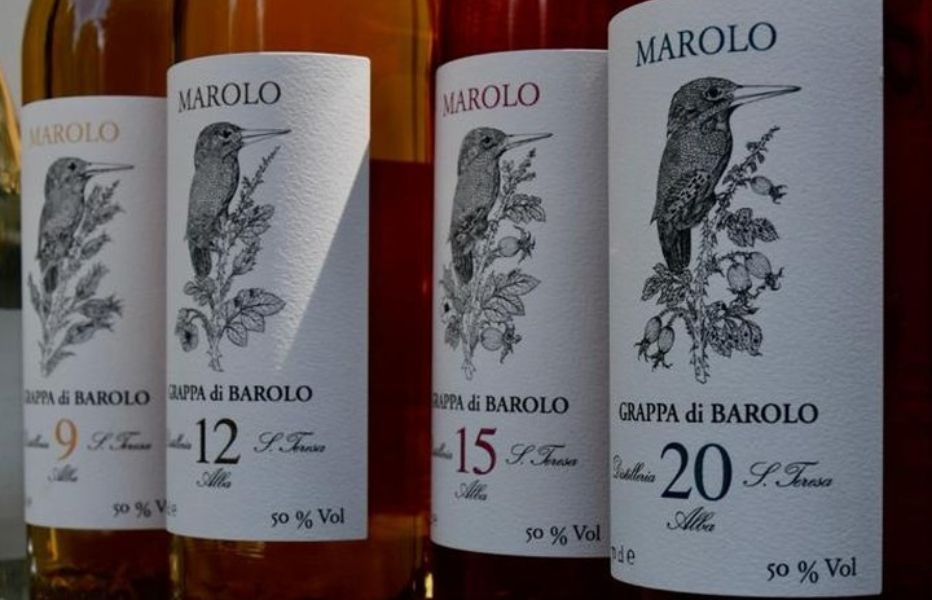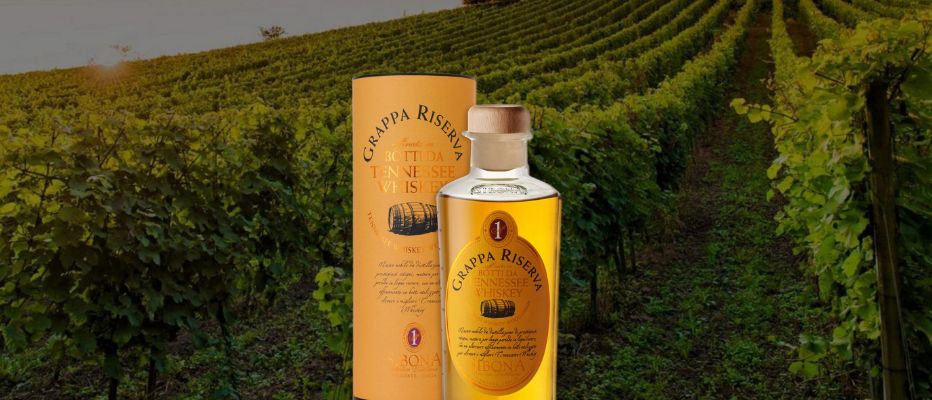Super Early Deadline
30 November 2025
Judging
Date
24 & 25 March 2026
Winners Announcement
22 April 2026
30 November 2025
24 & 25 March 2026
22 April 2026

Grappa, the Italian distilled spirit, is experiencing a remarkable surge in its global export market, showcasing a 32% increase in recent years. This success is not just a reflection of its superior quality and craftsmanship, but also a result of strategic marketing efforts positioning grappa as a premium product in the spirits landscape.
Data from AssoDistil recently showed that grappa's exports have surged by an impressive 32%, highlighting its growing popularity worldwide. Export values from 2019 to 2022 reached 60 million euros. Key markets include Germany, the United States, and Japan, with the latter two experiencing remarkable growth rates of +39% and +40% respectively. This significant increase is attributed to several key factors, including the inherent sophistication of Italian distillates, the diverse range of flavors and styles offered by grappa, and the strategic marketing campaigns implemented by producers.
But this hasn’t always been the case. This Italian spirit made from grape pomace has historically struggled to gain appreciation owing to industrial production techniques and lack of nuance. One spirits expert recalled: “My first encounter was a Grappa di Moscato that had been homebrewed by an old-school grape grower from the Langhe region, and it nearly blew my head clean off! When attempting to buy a couple of bottles from local supermarkets in Piemonte to see if I was missing something, the effect was much the same. I assumed I had missed the point of this drink completely.”
However, a group of committed distilleries started leading a resurgence in grappa quality and reputation.

Source: Godello
For example, Marolo, founded in 1977 by Paolo Marolo, a teacher at Alba’s Oenological School, aimed to elevate grappa by using high-quality grape pomace from prestigious vineyards in Piemonte. This approach contrasts with the historical view of grappa as a way to utilize leftover pomace. The distillery's use of small, time-consuming stills allows for the delicate extraction of flavors from the pomace. They source pomace from top winemakers, ensuring it is clean and aromatic. Marolo processes the pomace within 90 days to preserve freshness and flavor.
Marolo's portfolio includes grappas made from various grape varieties, including Arneis, Moscato, and Barbera, sourced from different Piemontese regions. They also produce region-specific and single-vineyard grappas, reflecting the terroir of the grapes.
In addition to grappa, Marolo resurrected the Dottore Domenico Ulrich brand, producing vermouth and amaro based on historical recipes. This venture highlights the company's commitment to reviving traditional and regional drinks.
There are approximately 130 grappa distillers in Italy, primarily located in the north, with the Veneto region being a major producer. Traditionally consumed as a young white spirit, the quality of grappa has significantly improved in recent decades, offering a wide variety of styles.
Decanter magazine has gotten on the grappa bandwagon. A recent article recommends several grappas to try, including:
- Antinori Tignanello Grappa: Made from the best lots of Cabernet Sauvignon and Sangiovese from the Tignanello vineyard in Tuscany. It features grape, pear, and cream aromas with a long finish of subtle red fruits and cream.
- Cocchi Bianca Grappa: A white grappa with a grapey aroma, hints of seawater and cream, and a sweet, creamy finish with a hint of peach.
- Cocchi Dorée Grappa: Made from Moscato aged for at least three years in oak barrels, it has a peachy, yellow fruit nose with a resinous, piney palate and a finish of peach skin, nuts, and pear.
- Loredan Gasparini Capo di Stato Grappa: Made from the marc left after fermenting the estate’s flagship red wine, it has scents of black tea, pepper, grape, and peach skin, with a spicy, herbal palate and a finish of cherry, grape, and white pepper.
- Marolo Grappa di Barolo 12 Year Old: Aged for 12 years, it has woody, peppery, and tobacco-infused scents with a warm palate of hedgerow fruits, toasty oak, and caramelized nuts, finishing with a rich tobacco flavor.
These examples highlight the diverse range of grappas available, from fruity and floral to spicy and herbal, showcasing the spirit's versatility and complexity.
The success of grappa in the export market holds particular importance for the on-trade sector and sommeliers. As wine producer Banfi has emphasized, sommeliers must understand grappa. “Grappa, which is a distillate of fermented grapes, is not to be confused with grape Acquavite, which is rather a distillation of wine. Similarly, the Grappa is not a distillate of wine (such as Brandy, Cognac or Armagnac),” says Banfi. Therefore, “marcs distillate, grape must distillate and wine distillate are three different beverages. The quality of grappa depends primarily on the quality of grape marcs used, and secondly, on the skill of the master distiller.”
In the on-trade industry, which encompasses bars, restaurants, and hotels, grappa serves as a premium offering that enhances the overall dining experience. Sommeliers, as experts in wine and spirits, play a crucial role in educating consumers about the intricacies of grappa, helping them appreciate its unique flavors and characteristics.
Leveraging Spirits Competition Success for Marketing
One key strategy that has contributed to Grappa's marketing and sales success is its performance in spirits competitions. For example, in 2022, Grappa Riserva Invecchiata in Botti da Whiskey grabbed the award for the Best Brandy Of The Year at the London Spirits Competition and a Gold medal with 93 points. Winning accolades in prestigious competitions not only enhances the spirit's credibility and prestige but also provides valuable marketing opportunities. For instance, a grappa that clinches a gold medal in a renowned competition can leverage this achievement in its marketing campaigns, attracting consumers seeking high-quality spirits.

Italy boasts an impressive array of 35 spirits with Geographical Indication (GI), including 27 distilled varieties. This not only highlights the diversity and richness of Italian traditions but also provides consumers with a sensory journey through the various regions of the country. The recent inclusion of spirits in the reform of Geographical Indications underscores the importance of protecting and promoting Italian spirits globally.
Within this, there are nine Indicazione Geografica Tipica (IGT) classifications for grappa, each representing a particular geographic and organoleptic profile. These classifications are mainly in the north of Italy, including Veneto, Lombardy, Piedmont, Friuli Venezia Giulia, and Valle d’Aosta. Grappa must have a minimum alcohol content of 37.5% abv, or 40% for IGT grappas. It is often enjoyed in the traditional Venetian way called resenting, where a few drops are swirled in an almost-drained espresso cup.
As grappa continues to gain traction in the global market, its future looks bright and promising. With its superior quality, diverse flavors, and rich heritage, grappa is poised to maintain its upward trajectory. Strategic marketing efforts, coupled with recognition in spirits competitions, will further solidify grappa's position as a premium and sought-after spirit in the global market.
In conclusion, grappa's success in the export market is a testament to its quality, craftsmanship, and strategic marketing initiatives. As it continues to captivate the palates of consumers worldwide, grappa's influence in the spirits industry is set to grow, making it an indispensable addition to the portfolios of on-trade establishments and a favorite among sommeliers and enthusiasts alike.
Header Image - Grappa has a variety of styles; Source: Webedia
Show your spirits where it matters. Get your products tasted by top bartenders, buyers and experts at the London Competitions — enter now.